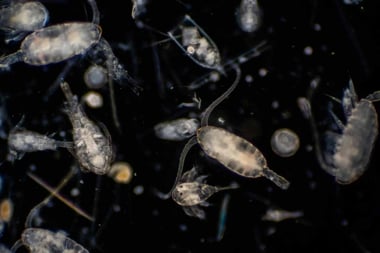Athlete's Foot
The medical term for athleteâ??s foot is tinea pedis, but those who suffer from this irritating and persistent skin condition call it far worse names than that! This common fungal infection affects about four per cent of Cana.
The medical term for athlete’s foot is tinea pedis, but those who suffer from this irritating and persistent skin condition call it far worse names than that! This common fungal infection affects about four per cent of Canadians, mostly men. It typically appears as small, water-filled blisters that develop into inflamed patches of burning, itching skin. Sometimes the skin can peel off in soft, whitened patches. Because this type of fungus lives off dead skin cells, it likes moist conditions and tends to settle around the toenails, between the toes and upon calloused areas of the sole.
A healthy person at peak immunity will be able to stay fungus-free. Someone with low resistance is more likely to become infected-perhaps repeatedly. Sweaty feet and poor hygiene contribute to a fungus-friendly environment. Choice of footwear is also a factor: synthetic materials in socks and shoes impede air circulation and encourage dampness. Athlete’s foot is contagious. It’s often transmitted through public showers and wet floors frequented by other sufferers. The fungus that causes it spreads quickly when the body’s beneficial bacteria have been destroyed by antibiotics or other drugs.
A diet that supports the immune system will help prevent and alleviate athlete’s foot. Eat plenty of whole grains, raw fruits and vegetables. To inhibit fungal growth, consume raw sauerkraut and other lactic acid fermented foods, as well as yogurt and kefir, which contain healthy bacteria. Avoid processed and fried foods, refined grains and soft drinks. Give up the sweets–fungi thrive on sugar.
Fungal Fighters
In addition to a healthy diet, supplementation may also be helpful. Lactobacillus acidophilus will replenish the "friendly" bacteria that combat the pathogenic growth of fungi in the body. Vitamin C helps reduce stress and, along with zinc, strengthens the immune system. Taken internally, garlic aids in destroying fungus. The essential fatty acids can help relieve pain and inflammation, and promote the healing of skin disorders, as do vitamins A, E and B complex.
Soak ‘Em
For an antifungal foot soak, dip your feet in a basin containing five or six crushed garlic cloves and a splash of apple cider vinegar in warm water. Soak until water cools, then dry feet thoroughly. Another option: add 20 drops of tea tree oil to a small tub of water and soak your feet for 15 minutes three times daily. Tea tree oil is a powerful natural antifungal, antiseptic and anti-inflammatory. Afterwards, soothe cracked skin with calendula cream.
Other tips include keeping your feet dry by towelling carefully after bathing, especially between the toes. Use towels only once before washing them (and socks, too) because fungal spores can survive in the material. Wear absorbent socks made of cotton or other natural fibres and powder your feet with baking soda to absorb moisture. A medicinal foot talc can be made by blending goldenseal root with arrowroot powder. At home, get rid of bathmats and tub toys because they can be breeding grounds for micro-organisms. And lastly, when in locker rooms or gym showers, wear shoes or slippers to prevent your feet from coming in direct contact with the floor.
Therapeutic Foot Baths
Sore feet are a real pain. After a long day at work, take a few minutes to eliminate aches with these reviving soaks.
Water-based Wakeup: measure two tablespoons (30 ml) of Espom salt into a small tub of hot water and soak your feet for at least 15 minutes. Rinse feet afterward. The Epsom salts will reduce swelling and pain caused by inflammation.
Healing Promoter: Ingrown toenails are a painful condition caused by too-tight shoes pressing your big toenail into the skin. To combat infection, soak the afflicted digit in a bowl containing one part of tea tree oil or grapefruit seed extract to five parts of water. Repeat this procedure two or three times a day.
Heel Healer: Crooks in the heal are often caused by poor circulation. Soak feet in Epsom salts or apple cider vinegar, and pumice calluses carefully. Apply a healing calendula cream.




